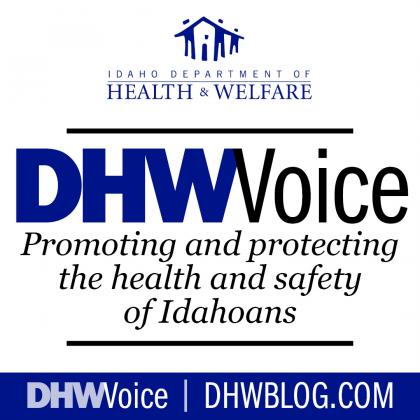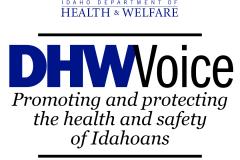Wildfire smoke is starting to impact our air quality in Idaho. Here's what you need to know.
Wildfire smoke can cause irritating symptoms for healthy people. It can cause more serious health issues for people with respiratory problems and heart and lung disease. It's important to know how to protect yourself and your family from smoky air whenever possible.
Who is most at risk for the harmful effects of smoke?
Infants and young children suffer more from the effects of smoke because they breathe more air than adults for their body size. Older adults and people with lung and heart conditions are also very sensitive to smoke in the air. Even low levels of smoke can cause breathing problems for sensitive groups with asthma, COPD, emphysema, and other chronic lung diseases. Smoke also can increase the risk of heart attack or stroke for people with chronic heart conditions and can increase the risk of premature birth in pregnant women.
When should we become concerned about the symptoms of smoke exposure?
Smoke can cause your eyes, nose, and throat to be irritated. You should call your doctor right away if you have shortness of breath, chest pain or tightness, headaches, fatigue, or a combination of those symptoms that become severe.
What if I have an event outside or my child has a game we can't miss, and the air quality is low?
Visit the Idaho Department of Environmental Quality's air quality website or the Idaho Smoke Information Blog to check local smoke conditions. You can also download the AIR Idaho app on your mobile device for smoke conditions in your area. The Department of Health and Welfare (DHW) also provides activity guidelines for outdoor events and other resources to help determine your risk level.
If an outdoor event isn't canceled when it’s smoky, drink plenty of water and do your best to limit time outside. If smoke-related symptoms become difficult or get a lot worse, move indoors. Your family's health is more important than a sporting event.
Should we consider wearing masks when conditions are poor?
While the most effective way to protect yourself from smoke is to stay indoors, we recognize this is not always possible. People who must be outside in the smoky air may benefit from wearing particulate respirators or N95 respirators. Respirator masks worn correctly may provide protection by filtering out fine particles in the smoke. Even so, many people find it difficult to wear a mask correctly. If a mask does not fit properly, it will provide little or no protection. Masks also can make it harder to breathe normally for some people. It is a good idea to check with your healthcare provider before using a mask.
How can we limit our exposure to smoke?
When conditions are poor, you should reduce your time and activities outside as much as possible. Stay indoors, in an air-conditioned area, if you can. If you don't have air conditioning, go someplace that does, like the mall or library. Otherwise, there are several things you can do to limit the smoky air you breathe:
- Keep your windows and doors closed.
- If you have central air conditioning, use an air filter rated MERV 8 or higher and turn the system fan on.
- If you must drive in smoky areas, keep all windows closed and turn the vehicle airflow to recirculate to reduce the amount of smoke in the vehicle. Use caution and drive slowly in smoky conditions.
- Do not add to smoky conditions by burning candles, using propane or wood-burning stoves or aerosol sprays, smoking tobacco products, or vacuuming. All of these and more can increase air pollution indoors.
- Change air-conditioning filters more frequently when the air is smoky.
- Use portable air cleaners to reduce indoor air pollution.
- Pay attention to local air quality reports and health warnings.
Where do I go for more information?
The resources listed below provide up-to-date information on smoke conditions and tips on how to stay healthy during wildfire smoke events:
- Idaho Health and Welfare Wildfire Smoke
- Guide for Staying Healthy During Wildfire Smoke
- AirNow
- Idaho Smoke Information
- Idaho DEQ Air Quality Information
- Wildfire Smoke and Face Masks
Brigitta Gruenberg is the Environmental Health Program manager in the Division of Public Health.
The Idaho Department of Health and Welfare is dedicated to strengthening Idahoans' health, safety, and independence. Learn more at healthandwelfare.idaho.gov.



Join the Discussion
Please note the following terms of participation in commenting on the DHW Voice blog.
To ensure a productive discussion you agree to post only comments directly related to this post and to refrain from posting obscenities; threatening, abusive or discriminatory language; sexually explicit material; and other material that would violate the law if published here; promotional content; or private information such as phone numbers or addresses. DHW reserves the right to screen and remove inappropriate comments.